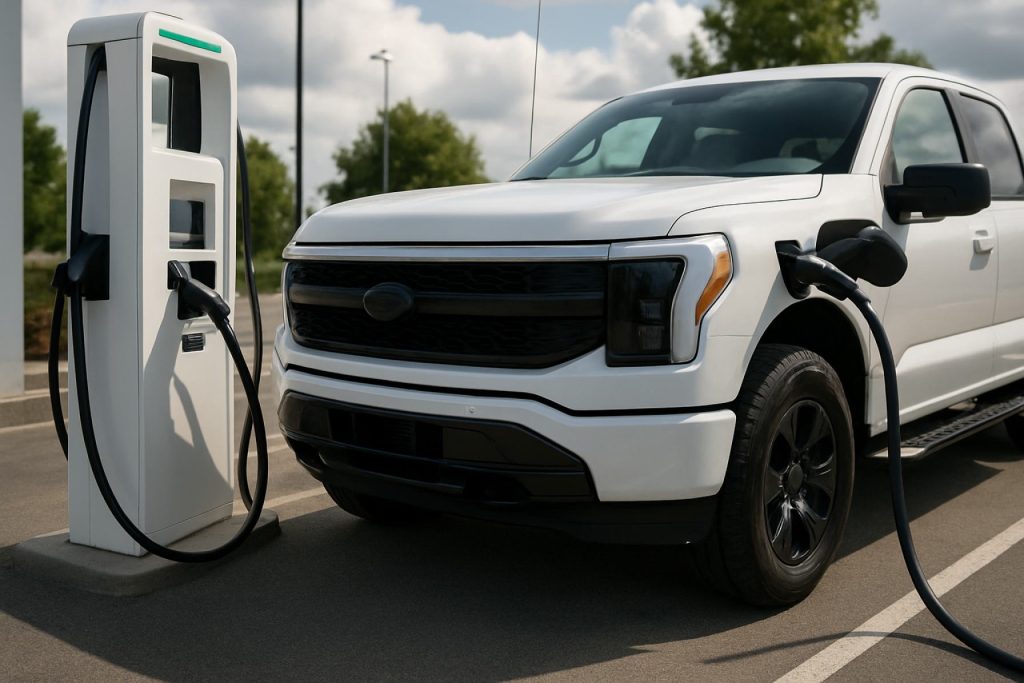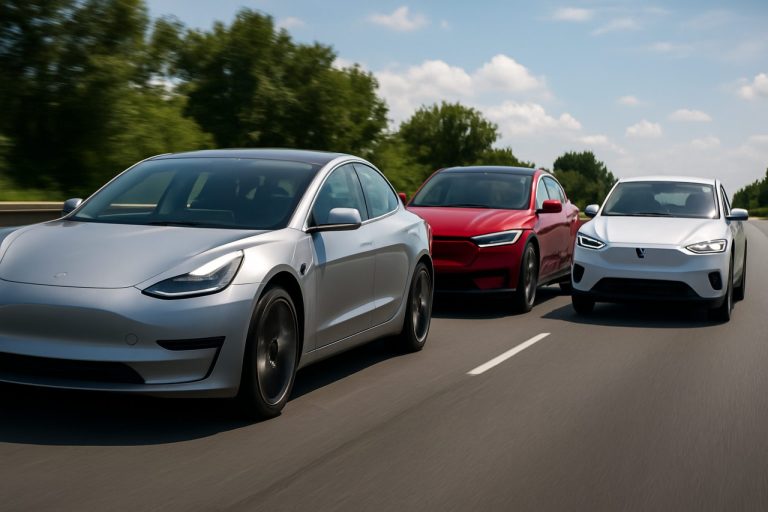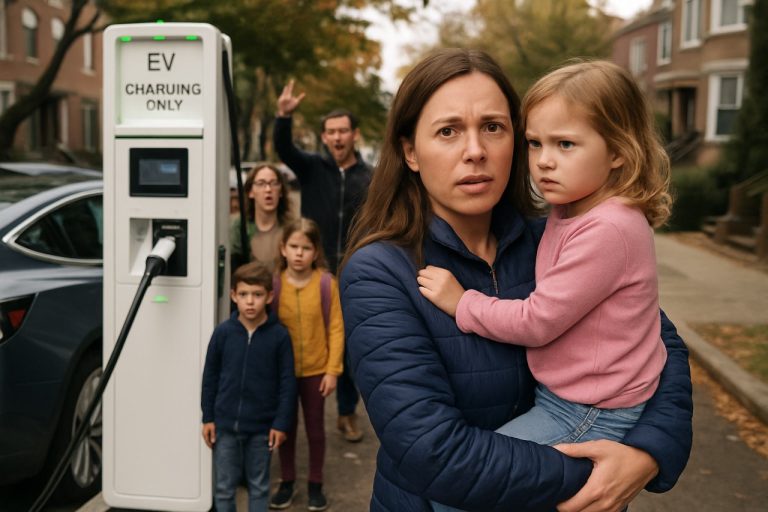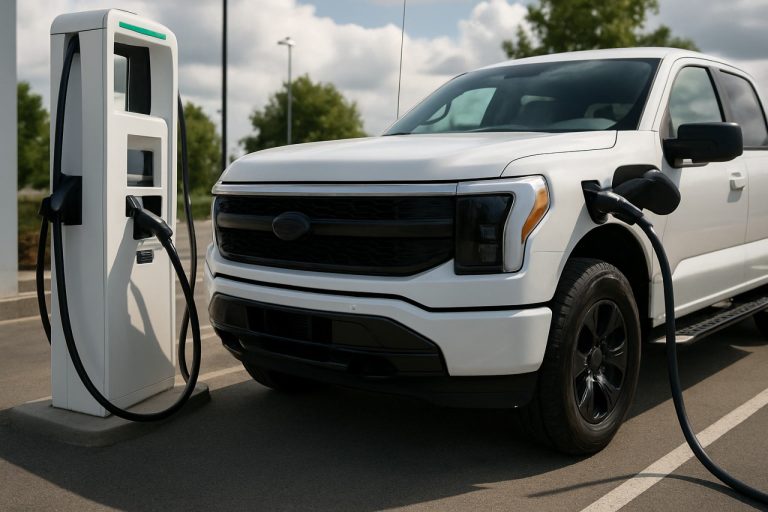
- Tesla’s dominance is waning due to rising competition, quality concerns, and once-exclusive Supercharger network now open to other brands through the NACS standard.
- Luxury and performance EVs such as the Lucid Air, Hyundai IONIQ 6, Volvo EX90, and Kia EV6 GT offer advanced engineering, long range, and universal charging access.
- The pickup truck segment is being reimagined, with Ford F-150 Lightning and Rivian R1T appealing to buyers seeking versatility over the dramatic Cybertruck style.
- Consumers now benefit from increased choice, enhanced EV reliability, and wider access to fast charging, signaling the end of “just get a Tesla” recommendations.
- The electric vehicle landscape is more competitive, innovative, and tailored than ever, empowering buyers to select EVs that match their needs and values.
For years, Teslas dominated the electric landscape—synonymous with the promise of a plug-in future and bolstered by charging stations glinting like beacons beside highways from California to Connecticut. Reliability, seamless software, and—above all—a proprietary Supercharger network made owning a Tesla a no-brainer for many Americans stepping into their first electric vehicle.
But clouds have gathered over Tesla’s once unstoppable reign. Mounting questions about quality, a flurry of headline-making recalls, and the polarizing presence of its chief executive have taken a toll. Those dinner-table recommendations—“Just get a Tesla”—have started to fade, as consumers cast their gaze toward a rapidly diversifying showroom of electric contenders.
An unexpected twist in the plot: Tesla’s own Supercharger network, long its ace in the hole, has surrendered exclusivity. Now, industry heavyweights like Ford, Hyundai, and Kia are plugging into the very infrastructure that once kept them at arm’s length, thanks to the plug standard known as NACS. Newcomers can map routes and charge with ease, leveling the road for rivals to challenge Tesla’s throne.
The Next-Gen Electric Dream Machines
Lucid has emerged as the talk of luxury EVs, the LUCID MOTORS Air gliding silently across asphalt with cutting-edge engineering and fit-and-finish polished to near perfection. Born from the minds of engineers who helped launch the Model S, the Lucid Air sets a new benchmark for quality and exhilarating performance. Its Sapphire trim clocks ludicrous acceleration—refined, yet radical—while offering a cabin that whispers opulence. And with Supercharger access in the pipeline, Lucid drivers will soon wield the very tool that made Tesla a favorite.
Hyundai surges ahead with the sleek IONIQ 6, capturing attention not only for its streamlined silhouette but also for its real-world range and lightning-quick charging. With up to 338 miles on a single charge and generous incentives rolling out across showrooms, Hyundai is cleaning up in a market starved for compelling sedans. The 2026 refresh will include a native NACS port, streamlining Tesla-level charging convenience for all.
Meanwhile, Volvo brings Scandinavian serenity and earth-shaking horsepower to the family hauler segment. The three-row EX90 promises 310 miles of quiet, electric adventure—crafted with the same meticulous attention to safety and sustainability that has made Volvo a household name for decades. The EX90 is reshaping what it means to move the family, with technology and comfort uncompromised.
For the thrill-seekers, Kia’s EV6 GT arrives with bold lines and the heart of a sports car. It can leave some supercars in the dust and, thanks to wide availability, attractive pricing, and universal charging, brings accessible performance to the masses. Kia’s underdog spirit and muscular EVs are winning converts faster than a green light at a drag strip.
Rethinking the American Electric Truck
As for the polarizing Cybertruck, its sharp edges and bravado have left traditional truck buyers searching for substance behind the style. Many find more to like in the practical prowess of the Ford F-150 Lightning or the future-facing confidence of the Rivian R1T, both rapidly carving out loyal followings. The evolution of the American pickup is about capability, versatility, and—just maybe—toning down the drama.
Takeaway: Choice, Competition, and a Brighter Road Ahead
One thing is clear: the era of the one-size-fits-all electric car recommendation is over. Shoppers now command a vibrant menu of electric options, each boasting refined design, improved reliability, and nationwide charging ease. The sharing of once-exclusive infrastructure means no single automaker holds the keys to the kingdom.
This new electric age empowers buyers to choose vehicles that genuinely reflect their needs and values, from luxury performance to eco-conscious practicality. With fresh brands stepping into the spotlight and familiar names upping their game, America’s electrified future promises more freedom and innovation than ever before.
For more on the changing automotive landscape and the latest in technology, visit The New York Times or explore advances in electric vehicles at Tesla.
The EV Revolution Heats Up: Must-Know Upgrades and Insider Secrets Beyond Tesla’s Shadow
# The Evolving EV Landscape: New Leaders, Hidden Features, and Game-Changing Trends
The Tesla era of electric vehicles (EVs) is no longer the only show in town. As legacy automakers and disruptive startups level up their designs and tech, 2024 is ushering in a golden age of electric choices that moves far beyond Tesla’s first-mover advantage. Here’s an expanded, expert-informed guide to what’s new, what’s next, and how buyers can take full advantage of the modern electric vehicle revolution.
—
What’s Shaking Up the EV Market in 2024?
1. The Collapse of Proprietary Charging:
Tesla’s once-exclusive Supercharger network, using the North American Charging Standard (NACS), is now open to Ford, General Motors, Hyundai, Kia, Volvo, Rivian, and others. By 2025, most non-Tesla EVs will feature the NACS port, making range anxiety and compatibility concerns a thing of the past ([Reuters](https://www.reuters.com)).
2. Brand-New Battery Tech:
– Lucid’s 900+ volt architecture in the Air enables ultra-fast charging—adding up to 300 miles in roughly 20 minutes.
– Hyundai’s E-GMP platform supports both 400V and 800V charging.
– New LFP (lithium iron phosphate) batteries are increasing cycle life and safety in mass-market EVs ([BloombergNEF](https://www.bnef.com)).
3. Software-Defined Performance:
OTA (over-the-air) updates are now standard, not just for infotainment, but for core performance and safety systems. Volvo’s EX90 is a leader, shipping with next-gen software and built-in driver assistance.
4. Real Sustainability Push:
EV brands are integrating recycled and bio-based materials—Volvo’s EX90, for example, uses Nordic wool blends and reclaimed fishing nets for interior finishes ([Volvo](https://www.volvocars.com)).
—
Pros, Cons, and Hidden Downsides
| Brand/Model | Pros | Cons/Limitations |
|———————-|——————————————————————|———————————————————————–|
| Tesla Model Y | Supercharger access, software lead | Quality control issues, recall history, controversial leadership |
| Lucid Air | Unmatched range, luxury, fast charging, build quality | High price, lower brand recognition, limited service infrastructure |
| Hyundai IONIQ 6 | Competitive pricing, strong incentives, rapid charging | Smaller dealer network vs. Toyota/Honda, resale values still evolving |
| Volvo EX90 | Safety, sustainability, strong range, family-friendly | New platform reliability TBD, higher price point |
| Kia EV6 GT | Performance, affordability, wide charging compatibility | Stiffer ride, less luxury focus |
| Ford F-150 Lightning | Pickup capability, built-in power outlets, dealer support | Range drops when towing, high trims are pricey |
| Rivian R1T | Adventure-ready, tech innovations, off-road capability | Service network still developing, expensive |
—
Pressing Questions: Expert Answers
Is Tesla still the best buy for most people?
Not necessarily. While Tesla’s network and tech are strong, new entrants now match or exceed them in reliability, features, and price—especially since charging is universalizing.
How do I know if my new EV will access Superchargers?
Confirm with your brand and trim level; most major automakers will include NACS from late 2024, or will provide adapters for existing owners. See details from your manufacturer.
What about repair and support outside Tesla?
Legacy automakers like Ford, Hyundai, and Volvo have extensive service networks, reducing the repair inconvenience that’s plagued some Tesla customers.
Do newer EVs offer better warranties or savings?
Yes—Hyundai, Kia, and Lucid offer longer battery warranties (typically 8–10 years, 100k miles). State and federal tax credits plus local incentives can knock thousands off sticker prices.
How green are these new electric cars?
Brands like Volvo and Hyundai are pursuing full supply chain audits, recycling, and ethical sourcing of key battery minerals. Check environmental reports from your favorite brands.
—
EV Life Hacks & How-To Steps for New Owners
Smart Charging Tips
– Level 2 Home Charging: Invest in a 240V home charger for maximum convenience and savings.
– Public Charging Ease: Apps like PlugShare and A Better Routeplanner help map the best fast chargers—most vehicles now include route-planning for charging stops.
– Battery Longevity: Charge to ~80% for daily use, and use fast charging sparingly to extend battery health.
Maximizing Incentives
– Federal Tax Credit: Check IRS eligibility for up to $7,500 off new EVs ([U.S. Dept of Energy](https://www.energy.gov)).
– State Perks: Many states offer rebates, HOV lane access, and discounted tolls. Search your state’s EV incentives portal.
—
Industry Trends and Predictions
– SUVs Lead the Charge: By 2025, over 50% of new EV launches will be crossovers and SUVs—meeting U.S. demand for space and practicality ([J.D. Power EV Index](https://www.jdpower.com)).
– Price Wars: With lower battery costs and rising supply, expect more sub-$40,000 EVs before 2026.
– Solid-State Batteries: Toyota and QuantumScape are betting on production of solid-state batteries by 2027, promising doubled range and faster charging ([BloombergNEF](https://www.bnef.com)).
—
Reviews & Comparisons: What Do Drivers Say?
– Lucid Motor Air: Praised for luxury and ride, but high cost and “early adopter” service hiccups reported.
– Hyundai IONIQ 6: Reviewers note excellent real-world range and value, with stylish design.
– Kia EV6 GT: Owners love acceleration, but wish for more comfort in daily driving.
– Ford F-150 Lightning: Considered revolutionary for utility, though range drops with heavy towing.
—
Security, Safety & Sustainability
– OTA Updates Reduce Recalls: Many issues can now be fixed through remote software, reducing downtime.
– Recycled Materials: More models offer interiors built from recycled plastics, wool, or fishing nets.
– Advanced Driver Assist: Volvo leads with lidar-based systems, while Tesla and others use camera- and radar-based systems. Know the differences before you buy.
—
Quick Action Tips for Shoppers
– Test drive multiple brands—each now offers unique strengths.
– Check if your preferred EV will support NACS/Supercharger access by late 2024.
– Stack local, state, and federal incentives to maximize savings.
– Plan your home charging setup BEFORE delivery to avoid delays.
– Join EV owner forums for real-world advice, troubleshooting, and best practices.
—
Stay ahead in the electric revolution—explore more in-depth coverage on The New York Times or compare new EVs at LUCID MOTORS.
Electrifying times are here—don’t get left behind as the EV world transforms before your eyes!



